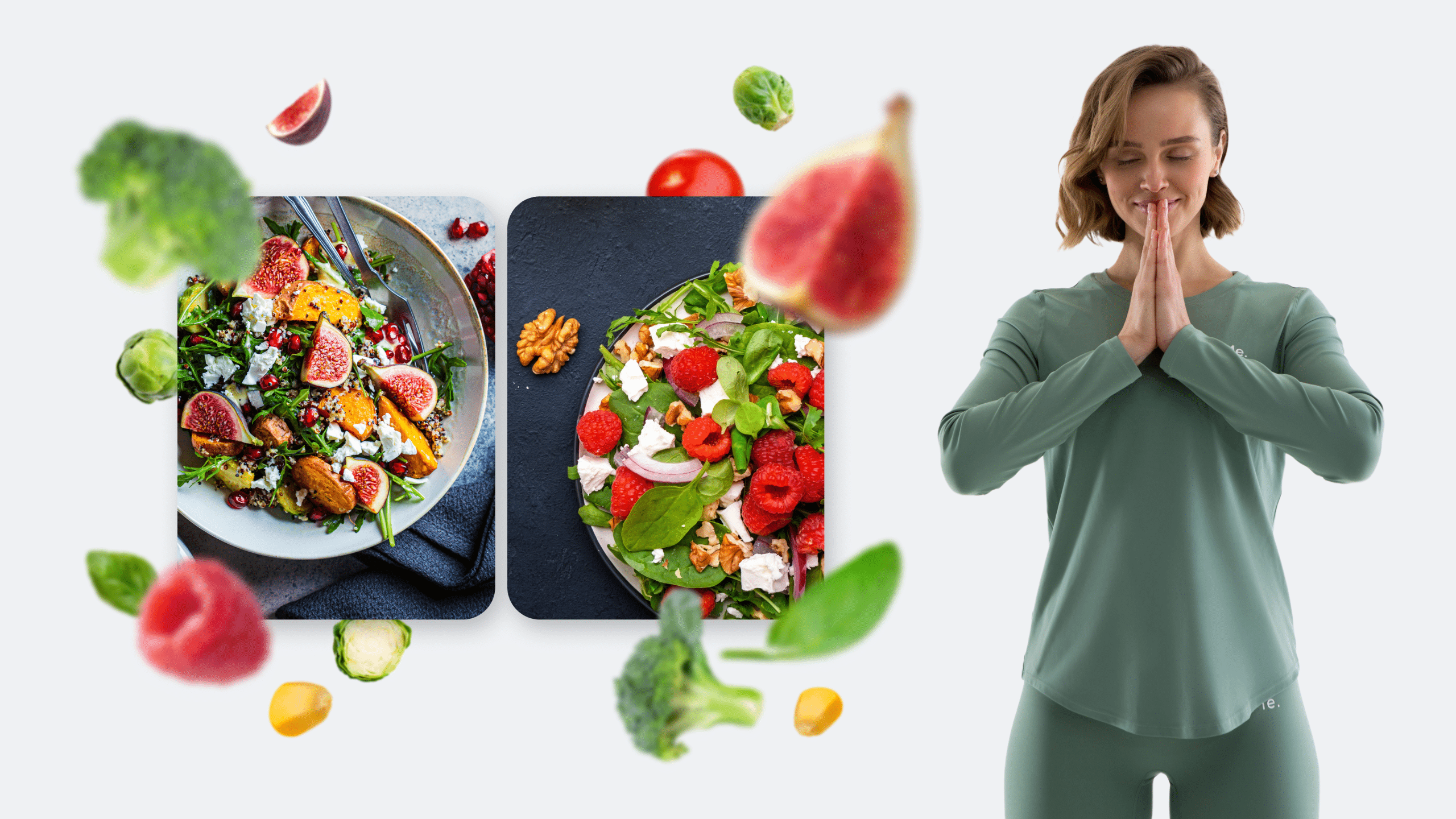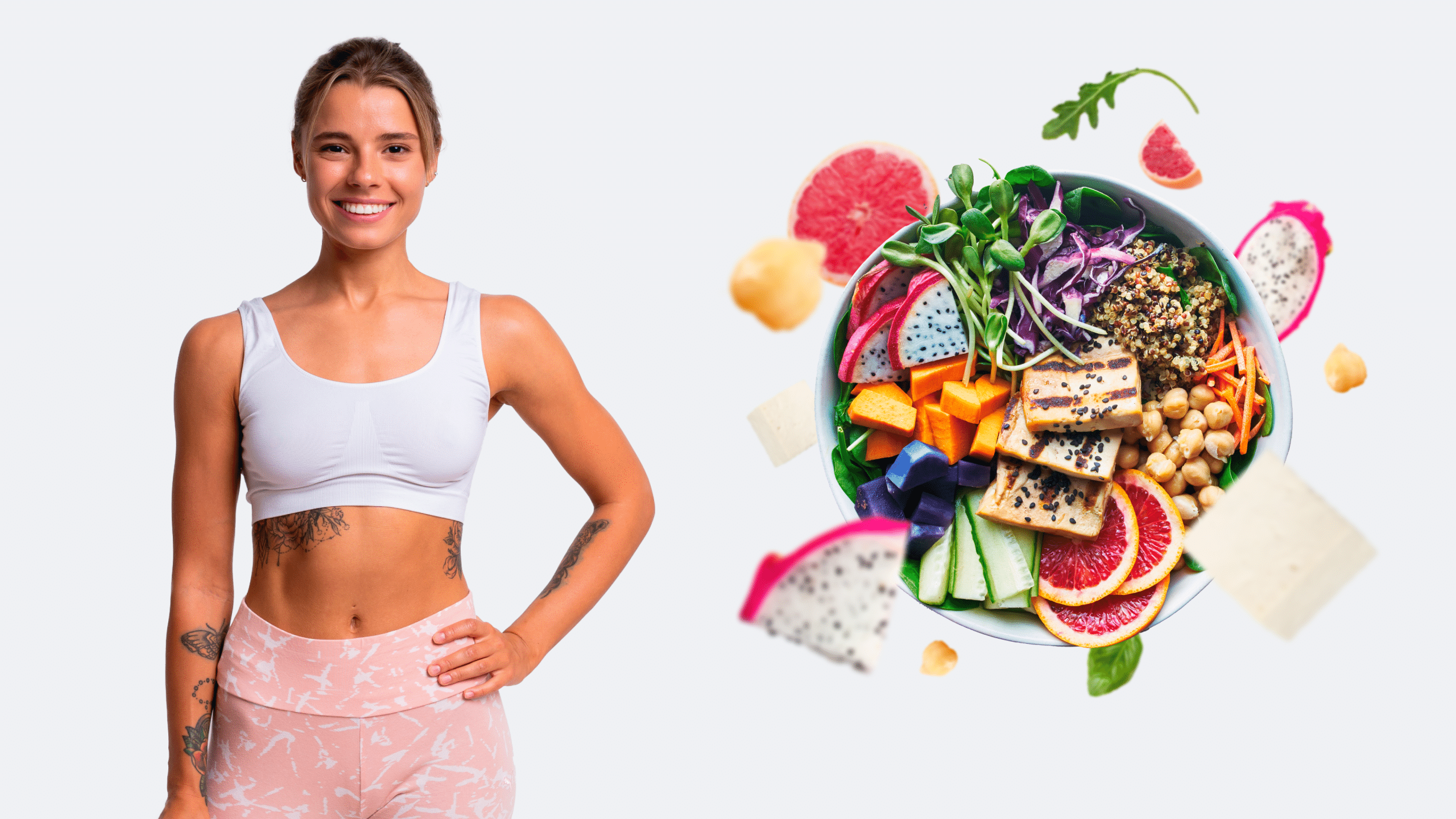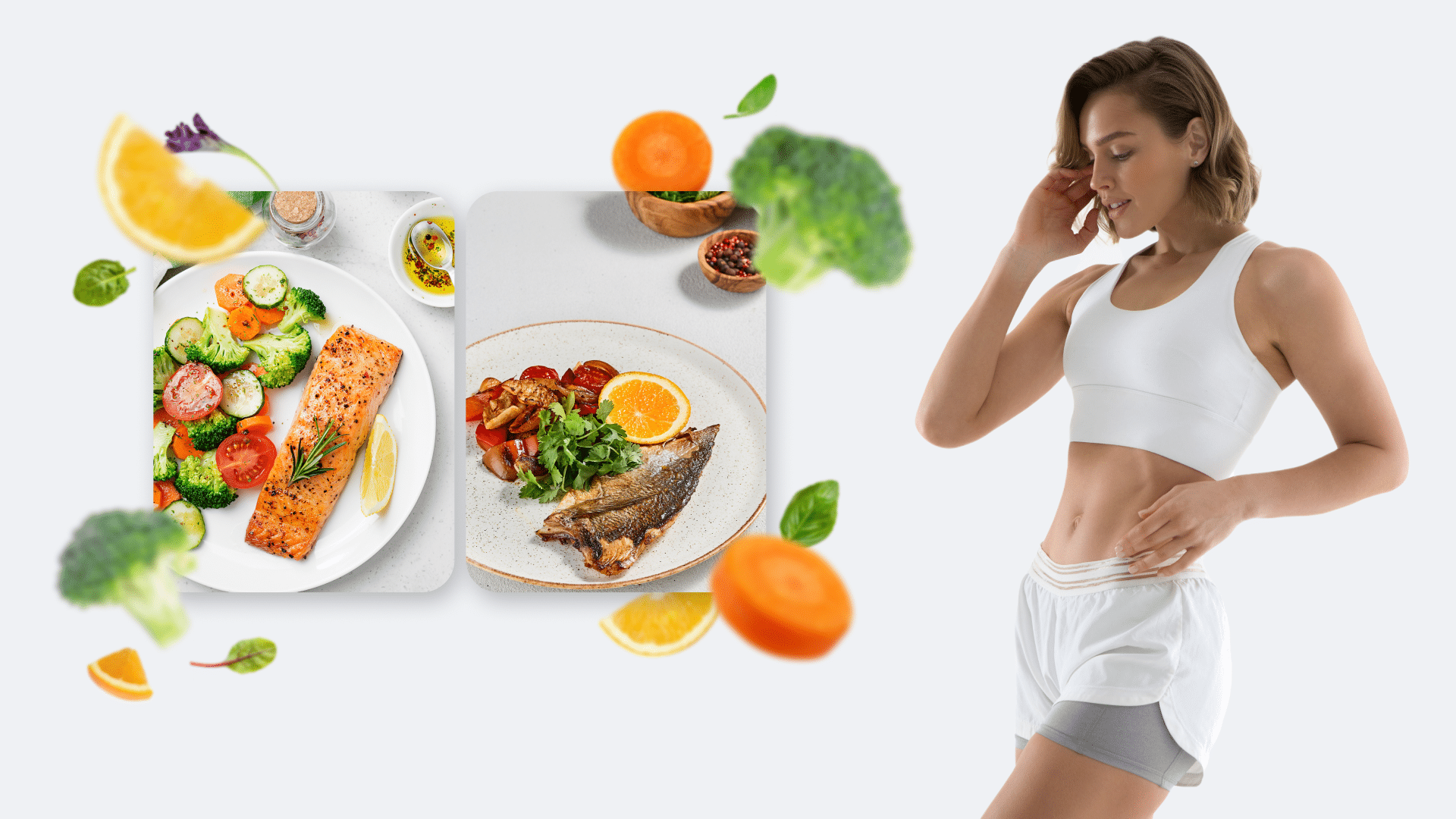Have you ever considered switching to a Buddhist diet? While the Buddhist monk diet is not as popular as the keto, vegan, or paleo diets, it’s still an eating plan that may help you achieve those body goals you’ve set for yourself.
In this article we’re going to look into what a Buddhist diet plan is, what it consists of, the Buddhist diet restrictions, and the benefits the Buddhist diet could potentially offer to your body.
A Little History of Buddhism
Before getting into this diet, it’s respectful to first learn a little about the religion that the diet is based on.
Buddhism is one of the largest religions in the world today and is mostly practiced in East and Southeast Asia. Those who don’t practice the religion may mostly recognize it through its beautiful temples, teachings of enlightenment, monks who are always dressed in robes, or simply through the tales or the golden statues of its founder Siddhartha Gautama, aka ‘The Buddha’.
Today, centuries after the founder of this religion passed on, it has spread throughout the world. The three main known forms of Buddhism are(7):
- Theravada Buddhism. This is practiced in Thailand, Burma, Sri Lanka, Laos, and Cambodia. It is the more conservative and older version of Buddhism and is mostly practiced by monks and nuns.
- Mahayana Buddhism. This is mostly practiced in China, Japan, Taiwan, Korea, Singapore and Vietnam.
- Tibetan Buddhism. This is mostly practiced in Tibet, Nepal, Mongolia, Bhutan, some parts of Russia, and in northern India.
All of these main schools of Buddhism have other smaller branches of Buddhism that are practiced in these geographical regions and other parts of the world.
What Type of Diet Do Buddhists Follow?
Monks and all other people who follow the teachings of Buddha and are part of the Buddhism religion follow the Buddhist diet.
What Is a Buddhist Diet?
To many, the Buddhist diet is mainly seen as a vegetarian diet that largely excludes meats. However, according to Britannica, not all branches of Buddhism follow a no-meat diet. For example
- East Asian Buddhist monks and nuns maintain meat-free diets with vegetarianism often seen as a mark of piety.
- Followers of the Mahayana branch of Buddhism are also said to accept some of the Buddhism sutras that prohibit meat eating.
- However, Theravada Buddhists who are said to follow Buddha’s teachings very closely don’t follow the no-meat rule as they say Buddha himself ate meat, so they can eat it too.
As Buddhism has widened its reach and extended across the world, the precept against murder was eventually extended to all animal life, thereby encouraging the adoption of vegetarianism. Some Buddhists choose to interpret this as it being okay to eat meat, as long as they personally don’t kill the animal themselves, while others don’t eat meat, poultry, fish, or eggs (15).
What Are the Rules of The Buddhist Vegetarian Diet?
As explained above, there’s no one way to describe the Buddhist diet. While we can all agree that it’s a largely vegetarian diet, it can be difficult to put the diet in one category of vegetarianism.
Therefore, with this in mind, the type of Buddhist vegetarian diet you will follow will largely be directed by the kind of Buddhism branch/sect you wish to follow, or your personal interpretation of the Buddhist dietary rules (15, 16). To make this easier for you, here are the three main types of vegetarianism (25, 26)
- Veganism. This is a popular diet that is famed for its many benefits, including weight loss. It’s a branch of vegetarianism that excludes the consumption of all animal products, including meat, poultry, fish, eggs, dairy products, honey, gelatin, and foods that contain these products.
- Pescatarian. This diet excludes meat and poultry, and sometimes dairy and eggs, but allows fish.
- Ovo-lacto vegetarianism. Anyone who practices this branch of a vegetarian diet consumes dairy products and eggs but excludes meat, fish, and poultry.
Ovo-vegetarianism and lacto-vegetarianism are branches of the main ovo-lacto vegetarianism branch. People who follow the former version exclude meat, poultry, dairy products, fish, and other seafood from their diet. They are only allowed to consume eggs.
Those who follow the latter branch exclude meat, fish, poultry, and eggs, in addition to foods that contain them, but they’re allowed to consume milk and all other dairy products such as butter, cheese, and yogurt. Many Buddhists fall into this category.
If there’s no one way to determine the kind of vegetarian diet that encompasses the Buddhist diet, how can I know what to eat?
This is where the Buddhist dharma comes in. Also known as religious or moral laws, these five main rules are the laws by which many who practice this religion strive to live. These five moral precepts of Buddhism include (7, 9):
- Not killing living things. This doesn’t just apply to humans and also includes the lives of animals.
- Not taking what is not given. This essentially means you shouldn’t steal.
- Refraining from sexual misconduct. Lustful actions are frowned upon and people are prohibited from experiencing too much sensual pleasure.
- Refrain from wrong speech. People are discouraged from lying and gossiping.
- Refrain from intoxicants that cloud the mind. Buddhism prohibits its followers from indulging in alcohol and other drugs as they keep you from thinking clearly.
Because of the first percept that prohibits the killing of either humans or animals, one could say that the Buddhist diet is best classified under lacto-vegetarianism. This sub-branch allows milk and dairy products (no killing is done to get these products), but prohibits the consumption of fish, meat, and poultry as the animal in question would have to lose its life.
BetterMe is your fast-track ticket to a long-lasting weight loss! Tailor your fitness journey and maximize your results with just a couple of swipes!
What Other Buddhist Diet Restrictions Are There?
Animal products (processed or fresh) – other than milk and dairy products – are not the only things the Buddhist diet is against.
- Alcohol. As stated above alcohol – wine, beer, and spirits – and other drugs are forbidden on this eating plan. This drink is prohibited as followers of this religion believe it clouds the mind and causes heedlessness. It’s seen as a symbol of excess behavior and is largely associated with a loss of control (2, 28).
- Pungent Vegetables. Onions, garlic, shallots, chives, and leeks are the five pungent vegetables that aren’t allowed on the Buddhist diet. These ‘sharp tasting vegetables’ are said to be ‘hot and strong’, which Buddhists believe can lead to an increase in sexual desire and anger (8, 19). If you choose to follow this eating plan to the letter, then none of your Buddhist diet recipes should contain these vegetables.
You should also try to avoid fast or fried food, refined grain products, added sugars and candy, and most ultra-processed foods. While they’re not specifically restricted on the Buddhist diet, they may interfere with your plans for using this eating plan for weight loss.
What Does a Buddhist Diet Consist of?
Here are all the foods you can consume on the Buddhist diet without breaking the rules. All these foods should be included in your Buddhist diet for weight loss for the most balanced and varied diet possible:
-
Leafy greens
They are an important part of any healthy diet and should also be part of your Buddhist diet for weight loss. Leafy greens such as collard greens, kale, bok choy, spinach, Romaine lettuce, and Swiss chard are packed with vitamins, minerals, and fiber, but are low in calories.
The vitamins, minerals, and antioxidants in dark green leafy vegetables may also help prevent diseases such as osteoporosis, cardiovascular disease, and several types of cancer (14).
-
Cruciferous Vegetables
Popular examples include broccoli, cauliflower, radish, kale, Brussels sprouts, watercress, and cabbage.
They should be part of your Buddhist eating plan because they’re low in calories and rich in minerals and nutrients such as folate, vitamins C, E, and K, and fiber.
They help keep you fuller for longer and may help lower inflammation and reduce the risk of developing cancer (13).
-
Starchy Vegetables
The debate regarding whether starchy vegetables are good for you remains a heated one. While some people choose to avoid them due to the popularity of low-carb diets, they’re still beneficial to your health, an important part of a balanced diet, and may have a protective effect on mortality risk (5, 4).
If you want to add starchy foods to your diet, we suggest focusing on starchy vegetables, whole grains, and legumes. They are the main source of carbohydrates for many people – carbs are used as glucose for the body for energy – and they also contain fiber, calcium, iron, and B vitamins, which are excellent for your health (22).
Examples of starchy vegetables include potatoes, pumpkins, sweet potatoes, and yams.
-
Legumes and Lentils
While beans and lentils are high in carbohydrates, they shouldn’t be cut out of your Buddhist monk diet plan. These foods provide your body with protein, fiber, B vitamins, iron, copper, magnesium, manganese, zinc, and phosphorus. They’re also cholesterol-free, which makes them perfect foods for your heart health.
They may also lower the risk of developing type 2 diabetes, lower total and LDL cholesterol levels, and help manage your blood pressure. In terms of weight loss, lentils and legumes help due to their high amount of protein and fiber, which help keep you feeling fuller for longer (20).
-
Whole Grains
Examples of whole grains include oatmeal, quinoa, brown rice, millet, barley, and whole-wheat bread and pasta. They should be part of your Buddhist diet as they’re rich in fiber, which will help keep you full, preventing snacking or overeating that can contribute to weight gain.
They also have other important nutrients such as B vitamins, iron, folate, selenium, potassium, and magnesium. Other benefits of diets rich in whole grains may include reducing the risk of heart disease, type 2 diabetes, obesity, and some forms of cancer (27).
-
Fruits
Fruits should always be included in your diet as they’re healthy and help satisfy your sweet cravings. They’re full of essential vitamins and minerals and are high in fiber.
They also have a wide range of health-boosting antioxidants, which may help reduce your risk of developing heart disease, cancer, inflammation, and diabetes (18). Fruits such as grapes, berries, watermelon, kiwi, and pears are good for weight loss. They also make fantastic options to add to your drinks if you want to follow a 30-day smoothie diet plan, but it is usually recommended to eat fruits whole rather than in juices or smoothies when you’re trying to lose weight.
-
Nuts And Seeds
They’re excellent sources of protein, healthy fats, fiber, vitamins, and minerals. Their health benefits include helping with satiety, which means they keep you from snacking and going over your recommended calorie intake, and providing phytochemicals that may have antioxidant and anti-inflammatory benefits.
The healthy fats in nuts and seeds can also improve cholesterol profiles as they lower LDL (bad) cholesterol levels and raise your good (HDL) cholesterol, particularly when they replace saturated fats in your diet (11, 12). Your Buddhist diet plan can include almonds, chia seeds, cashews, sesame seeds, hazelnuts, hemp seeds, walnuts, pumpkin seeds, sunflower seeds, and more.
Read more: 7-Day Weight Loss Low-Carb Diet: Choose High-Protein, High-Fiber, or Ultra-Low-Carb
-
Protein in the Buddhist Diet
As lacto-vegetarianism doesn’t allow meat, eggs, fish, and poultry, this can lead to a lack of enough protein in your diet. Protein is very important on any weight loss journey as it (24, 10):
- Boosts your metabolism. Your body has to use more energy to break down and digest proteins. When you eat a high-protein diet, your body may burn a few extra calories every day.
- Positively impacts your hunger and satiety hormones. Once consumed, this macronutrient increases your satiety hormone – leptin – and reduces the levels of the hunger hormone – ghrelin.
- Prevents muscle loss and metabolic slowdown, which can happen when you don’t consume enough protein.
To prevent a lack of enough protein in your diet, the following foods can be included in your Buddhist vegetarian diet:
- Seitan
- Tofu
- Chickpeas
- Nutritional yeast
- Tempeh
- Spelt
- Edamame
- Spirulina
- Soy milk
- Teff
Sample of a Buddhist Diet Plan for Weight Loss
Remember that this eating plan doesn’t allow vegetables such as onions, garlic, scallions, chives, and leeks. This means that if you want to follow it to the letter, none of these ingredients should be included in your Buddhist diet recipes.
Day One
Meal 1 – Smoothie Bowl
1 medium-sized banana, 1 1/2 cups strawberry halves, 1 cup unsweetened coconut milk, 1 tbsp almond butter.
Cals: 291. Fats: 11 g. Proteins: 6 g. Carbs: 48 g.
Meal 2 – Meal 2 – Mango and Black Bean Tacos
2 tomatoes, 1/4 cup orange bell pepper, 1 tbsp lime juice, 2 tbsp fresh cilantro, 1/2 tsp Kosher salt, 15-ounce can black beans, 1/4 cup vegetable broth, 6 corn tortillas, 1 ripe mango, 1 avocado
The above ingredients are enough for 3 servings. One serving = 2 tacos
Calories for one serving: 420. Fats: 12 g. Protein: 14 g. Carbs: 70 g.
Meal 3 – Mushroom Soup and a Sandwich
For the soup -1/4 tsp olive oil, 1/2 tsp oregano, 1 tbsp soy sauce, 100 g white button mushrooms, 100 g brown button mushrooms
For the sandwich – 2 slices protein bread, 2 cups arugula, 1/2 cup sliced radishes, 1/2 cup sliced yellow bell pepper, 1/2 cup sliced red bell pepper, 1/2 cup cherry tomatoes, 1/2 medium-sized avocado
Calories: 543. Fats: 21 g. Protein: 27 g. Carbs: 71 g.
Total Intake for the Day: Calories: 1,254. Fats: 44 g. Protein: 47 g. Carbs: 189 g.
Day Two
Meal 1 – Pineapple-Blueberry Smoothie
1 cup pineapple chunks, 1 cup blueberries, 1 cup unsweetened almond milk, 1 tbsp peanut butter
Calories: 289. Fats: 10 g, Protein: 7 g, Carbs: 44 g
Meal 2 – Tofu Scramble with Kale and Sweet Potatoes
1 medium-sized cubed sweet potato, 1 tbsp canola oil, 85 g firm tofu, 7 cherry tomatoes, 2 cups kale
Calories: 399. Fats: 20 g, Protein: 16 g, Carbs: 45 g.
Meal 3 – ‘Tuna Sushi’ Bowl
For the ‘tuna’ – 1 1/2 tomatoes, 1 tbsp soy sauce, 1/2 tbsp grated fresh ginger, 1/2 tbsp toasted sesame oil, 1/2 tbsp sriracha, 1/2 tsp lime juice
For the rice – 120 g uncooked sushi rice, 15 ml rice vinegar, 1/2 tbsp sugar, a pinch of salt
The filling – 1/2 avocado, 1/4 cucumber, 1 carrot, 1 tbsp vegan mayonnaise, 1 tsp sriracha
Calories: 798. Fats: 32.6 g, Protein: 12.5 g, Carbs: 115.1 g.
Total Intake for the Day: Calories: 1,486. Fats: 62.6 g, Protein: 35.5 g, Carbs: 204.1 g.
If you’ve mustered up the courage to crush your weight loss goal, let Betterme take the sting out of this demanding process. Our app will help you restructure your habits, remold your life and crank up your fitness results!
Day Three
Meal 1 – Acai Smoothie Bowl
1 acai packet, 1 cup skim milk, 1 medium-sized banana, 1/2 cup strawberries, 1/2 cup blueberries, 15 g walnuts, 1 tbsp chia seeds
Calories: 489. Fats: 20 g. Protein: 16 g. Carbs: 66 g.
Meal 2 – Black Bean Spaghetti
170 g firm tofu, 2 cups green beans, 100 g mixed peppers, 51 g dry black bean spaghetti, 1 tbsp coconut oil, 1 tbsp sesame seeds
Calories: 496. Fats: 20 g, Protein: 45 g, Carbs: 40 g
Meal 3 – Buddha Bowl
Juice of 1/2 a large lemon, 1 tbsp nutritional yeast, 1 tsp maple syrup, 1/2 tsp oregano, 2 cups kale, 3 tbsp chickpeas, 1/2 cup couscous, 7 cherry tomatoes
Calories: 414. Fats: 11 g, Protein: 19 g, Carbs: 66 g
Total Intake for the Day: Calories: 1,399. Fats: 51 g, Protein: 80 g, Carbs: 172 g
Day Four
Meal 1 – Avocado Toast
2 slices sourdough bread, 4 tbsp refried beans, 1/2 medium-sized avocado, 5 cherry tomatoes, 1 tsp lemon juice, salt and pepper to taste
Calories: 385. Fats: 14 g, Protein: 11 g, Carbs: 59 g
Meal 2 – Matar Paneer (21)
1 tbsp sunflower oil, 225 g cubed paneer, 1 small piece of ginger, 1 tsp ground cumin, 1 tsp turmeric, 1 tsp ground coriander, 1 finely sliced green chili, 4 large ripe tomatoes, 150 g frozen peas, 1 tsp garam masala, small pack roughly chopped coriander
This recipe makes 2 servings
Calories for one serving: 544. Fats: 35 g, Protein: 35 g, Carbs: 18 g
Meal 3 – Salad
1 container plain yogurt, 1 medium-sized tomato, 2 large cucumbers, 1 large carrot, 7 small radishes, 1 tsp olive oil
Calories: 242. Fats: 6 g, Protein: 20 g, Carbs: 29 g
Meal 4 – Cheese and Berries
3/4 cup low fat cottage cheese, 1/4 cup blueberries, 1/4 cup blackberries
Calories: 171. Fats: 3 g, Protein: 22 g, Carbs: 15 g
Total Intake for the Day: Calories: 1,342. Fats: 58 g, Protein: 88 g, Carbs: 121 g
Please note that if the calorie intake for the day is too little for you, don’t starve yourself and feel free to increase the serving sizes or eat some healthy snacks between meals to help you reach your recommended calorie intake for the day. At the same time, it’s important to remember that overeating too much healthy food can also lead to weight gain. To prevent this, use a reputable calorie counting app such as the BetterMe app to help you figure out your calorie goal for weight loss and stick to this number for the best results
What Are the Pros of a Buddhist Diet?
As seen above, this eating plan is made up of mostly vegetables, fruits, and whole grains. All these foods are great for your body as they provide you with multiple vitamins, minerals, fiber, and antioxidants, all of which keep your body healthy and may help prevent you from developing many chronic illnesses.
These foods are also great for preventing obesity. This diet frowns upon the use of alcohol and other recreational intoxicating drugs. In addition to leading to reckless behavior, alcohol has more dangerous side effects.
The consumption of alcohol, particularly in excessive amounts, can contribute to the development of chronic diseases and other serious problems such as high blood pressure, heart disease, stroke, liver disease, and digestive problems. It could also lead to different types of cancer such as breast, mouth, throat, esophagus, liver, and colon cancer (3).
Are There Any Cons to the Buddhist Diet?
Yes, there are. As seen above, this eating plan discourages the consumption of meat, fish, poultry, and eggs. This could lead to a deficiency in protein, zinc, vitamin B12, omega-3 fatty acids (6, 23), and iron if not carefully managed (1).
Read more: 24 Weight Loss Smoothies, 2 Diet Plans, and 5 Belly Fat Smoothie Secrets
FAQs
Can a Buddhist eat meat?
Yes and no – this largely depends on the branch of Buddhism the individual belongs to and their personal interpretation of the dietary rules. Some branches/sects eat meat, but others don’t and choose to follow a lacto-vegetarian lifestyle and diet.
Do Buddhists drink coffee?
Yes, they do. Not only are there no Buddhist precepts that prohibit the consumption of coffee by believers, but some East Asian Buddhist monasteries in Korea have been seen embracing the coffee culture and slowly replacing the old tea drinking culture, which has been part and parcel of Buddhism and monks traditions and ceremonies (17).
What 5 vegetables don’t Buddhists eat?
The 5 pungent vegetables Buddhists don’t consume are onions, garlic, shallots, chives, and leeks.
Can Buddhist vegetarians eat eggs?
Buddhists who follow the precept of not killing living things don’t eat eggs as they believe this to be an indirect way of killing chickens.
What is the Zen diet in Buddhism?
Zen Buddhism is a sub-branch of Mahayana Buddhism (29), one of the main Buddhist branches that prohibits the consumption of meat (15). The Zen diet in Buddhism may follow the rules of lacto-vegetarianism.
The Bottom Line: Is the Buddhist Diet Worth It for Weight Loss?
Yes, if it’s done right, the Buddhist monk diet could help you lose weight. It’s a largely plant-based eating plan that encourages its followers to eat nutritious foods. However, you should take note that this eating plan cuts off some major protein sources.
To prevent this, you must replace these options with vegan and vegetarian-friendly options. You should also consult your doctor for advice on dietary supplements to add the missing nutrients to your diet if necessary.
The Buddhist diet is a far better weight loss diet program than the popular 3-week diet plans that are very low in calories and have some rather questionable rules. Above all, please make sure to consult your doctor or dietitian before you change your eating plan.
DISCLAIMER:
This article is intended for general informational purposes only and does not address individual circumstances. It is not a substitute for professional advice or help and should not be relied on to make decisions of any kind. Any action you take upon the information presented in this article is strictly at your own risk and responsibility!
SOURCES
- [Nutritional risk factors of a vegetarian diet in adult lacto-ovo vegetarians] (2000, pubmed.ncbi.nlm.nih.gov)
- Alcoholic Drinks and Drinking (Buddhism) (2017, link.springer.com)
- Alcohol Use and Your Health (2024, cdc.gov)
- A prospective cohort study of starchy and non-starchy vegetable intake and mortality risk (2022, cambridge.org)
- Associations of starchy and non-starchy vegetables with risk of metabolic syndrome: evidence from the NHANES 1999–2018 (2023, ncbi.nlm.nih.gov)
- Body composition and nutrient intake of Buddhist vegetarians (2009, pubmed.ncbi.nlm.nih.gov)
- Buddhism (2024, history.com)
- BUDDHISM – Framingham State University (2009, framingham.edu)
- Buddhist beliefs – Edexcel (n.d., bbc.co.uk)
- Clinical Evidence and Mechanisms of High-Protein Diet-Induced Weight Loss (2020, ncbi.nlm.nih.gov)
- Composition of Nuts and Their Potential Health Benefits—An Overview (2023, ncbi.nlm.nih.gov)
- Consumption of Nuts and Seeds and Health Outcomes Including Cardiovascular Disease, Diabetes and Metabolic Disease, Cancer, and Mortality: An Umbrella Review (2022, ncbi.nlm.nih.gov)
- Crucial facts about health benefits of popular cruciferous vegetables (2012, sciencedirect.com)
- Dark Green Leafy Vegetables (2013, ars.usda.gov)
- dietary law (n.d., britannica.com)
- Dietary Restrictions of Other Religions (2002, jandonline.org)
- From the Tea to the Coffee Ceremony: Modernizing Buddhist Material Culture in Contemporary Korea (2017, researchgate.net)
- Health Benefits of Fruits and Vegetables (2012, ncbi.nlm.nih.gov)
- Korean religious food, Buddhist temple food (2017, kocis.go.kr)
- Legumes: Health Benefits and Culinary Approaches to Increase Intake (2015, ncbi.nlm.nih.gov)
- Matar paneer (2017, bbcgoodfood.com)
- Starchy foods and carbohydrates (2023, nhs.uk)
- The nutritional status of iron, folate, and vitamin B-12 of Buddhist vegetarians (2011, pubmed.ncbi.nlm.nih.gov)
- The role of protein in weight loss and maintenance234 (2015, ajcn.nutrition.org)
- Type of Vegetarian Diet, Body Weight, and Prevalence of Type 2 Diabetes (2009, ncbi.nlm.nih.gov)
- Vegetarians: Past, Present, and Future Regarding Their Diet Quality and Nutritional Status (2023, ncbi.nlm.nih.gov)
- Whole Grains (n.d., hsph.harvard.edu)
- Wine Consumption and Religions: A Research Note (2021, mdpi.com)
- Zen (2024, britannica.com)














